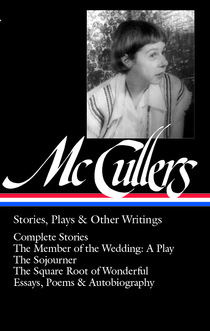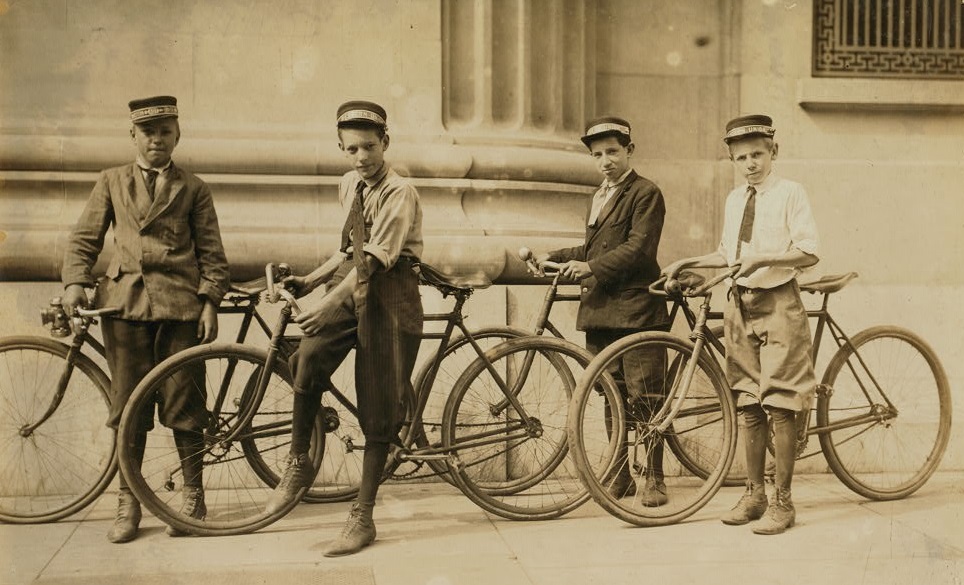From John O’Hara: Stories
Interesting Links
Obituary: “John O’Hara Dead; Novelist Dissected Small‐Town Mores” (Paul L. Montgomery, The New York Times)
“John O’Hara Wrote about the Things Rich People Do. Why Isn’t He Still Famous?” (Peter Tonguette, Humanities)
Previous Story of the Week selection by John O’Hara
• “Agatha”
Buy the book
 John O’Hara: Stories
John O’Hara: Stories
Sixty stories and novellas in all • 860 pages
List price: $40.00
Web store price: $32.00
recently published Library of America collection of O’Hara’s short fiction, “He was easier in his own skin, and it shows a little in the writing: there are fewer stories about loneliness, isolation or exclusion.” While some of the stories from his last decade are set in the tumultuous present of the sixties, many of his best works have a nostalgic quality and “revisit the tone and setting of the Gibbsville [Pennsylvania] stories of the thirties and forties.” Obituary: “John O’Hara Dead; Novelist Dissected Small‐Town Mores” (Paul L. Montgomery, The New York Times)
“John O’Hara Wrote about the Things Rich People Do. Why Isn’t He Still Famous?” (Peter Tonguette, Humanities)
Previous Story of the Week selection by John O’Hara
• “Agatha”
Buy the book
 John O’Hara: Stories
John O’Hara: StoriesSixty stories and novellas in all • 860 pages
List price: $40.00
Web store price: $32.00
Regardless of time and place, the late stories continue to display the strongest aspect of O’Hara’s fiction: his mastery of dialogue. As former Booklist editor Brad Hooper contends in his Short Story Readers’ Advisory: A Guide to the Best, O’Hara was able to capture American speech like few writers before or since:
Dialogue is the most important aspect of an O’Hara story—he always got the vocabulary, phonetics, cadences, and syntax just right, no matter what socioeconomic group, from the money class to the upper middle class, to ordinary working people and even show-business types. This skill enabled him to conjure up a vivid character in brief space. O’Hara supplemented his ear for dialogue with a keen consciousness of social trappings, for instance, the cars, the neighborhoods, the kinds of dwelling.In “Christmas Poem” (1964), one O’Hara’s Gibbsville stories, Billy Warden has returned home from college for the holidays. The story contains two stretches of pitch-perfect dialogue: an extended scene of family banter around the dinner table, followed by Billy’s post-adolescent preening among his old high school buddies. McGrath singled out this story among O’Hara’s late writings as “a story of late-adolescent unhappiness and frustration that ends on a note of piercing sweetness” and chose it to close the sixty stories and novellas in the Library of America collection. We present it here, in full, as the final Story of the Week selection for 2016, along with our best wishes for the holiday season.
Notes: Among the cultural, regional, and commercial references sprinkled in O’Hara’s story are the following: The Dort was a mid-level car built by the Dort Motor Company in Flint, Michigan, 1915–24; Russell Sage is a women’s college in Troy, New York; Harrigan is a kind of billiards game, also known as Kelly pool; Kappa Betes and T.N.E.’s are the secret societies Kappa Beta Phi and Tau Nu Epsilon, both with reputations for excessive drinking; Lock Haven was a Pennsylvania state teachers college, now Lock Haven University; Mercersburg is a college-preparatory boarding school; Whitehouse & Hardy’s are shoes from the clothing store of the same name. On page 804, Billy’s friend slyly slips in the line “Safe at last in your trundle bed,” from the Dartmouth College song “Where, Oh Where Are the Pea-Green Freshmen.”
* * *
Billy Warden had dinner with his father and mother and sister. “I suppose this is the last we’ll see of you this vaca¬tion,” said his father. . . . If you don't see the full selection below, click here (PDF) or click here (Google Docs) to read it—free!This selection is used by permission.
To photocopy and distribute this selection for classroom use, please contact the Copyright Clearance Center.
To photocopy and distribute this selection for classroom use, please contact the Copyright Clearance Center.






















